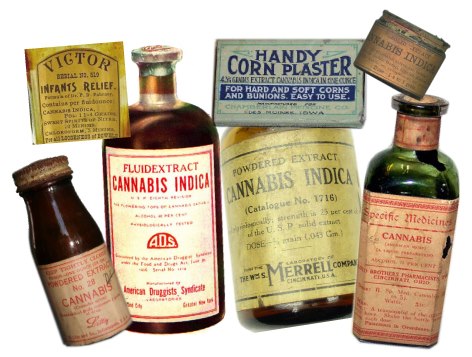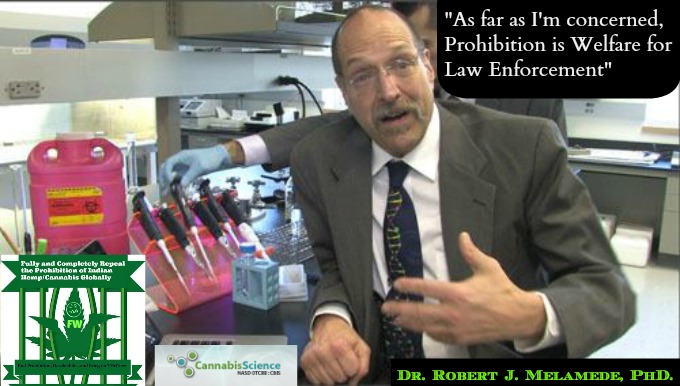
Taylor French on Medical Cannabis for Parkinson’s Disease
“Taylor French before and after treatments of Medical Cannabis for Parkinson’s Disease.
Please help us to save Taylor’s life and make him healthy again. Any help on your part will aid him and provide hope for others who are afflicted with this terrible disease.
Make checks payable to Health Village Seminars (Bank of America)
and email frenchtaylor@gmail.com so we can keep track.
Send donations and ship items to:
Health Village Seminars, c/o Taylor French-
2936 Calle Frontera, San Clemente, CA 92673
Phone 949-842-9291
Thanks so much in advance for your help,
Mike Paulus (long time friend), Janet (caregiver) ”
 Parkinson’s disease (PD) is a progressive neurodegenerative disorder. Movement is normally controlled by dopamine, a chemical that carries signals between the nerves in the brain. When cells that normally produce dopamine die, the symptoms of Parkinson’s appear. In 2007 it was said that Parkinson’s Cases Will Double In Next 25 Years. “According to a study published in the January 30 issue of the journal Neurology. The study highlights the significant challenge facing countries with rapidly growing economies…” and ” The study highlights the significant challenge facing countries with rapidly growing economies, particularly in Asia, many of which are ill prepared to meet this impending public health threat.The EndoCannabinoid System has been implicated in virtually all Human diseases and disorders. In order to safely treat and reveal THeCure for all of these diseases and disorders, there is no better solution than to naturally target the EndoCannabinoid System
Parkinson’s disease (PD) is a progressive neurodegenerative disorder. Movement is normally controlled by dopamine, a chemical that carries signals between the nerves in the brain. When cells that normally produce dopamine die, the symptoms of Parkinson’s appear. In 2007 it was said that Parkinson’s Cases Will Double In Next 25 Years. “According to a study published in the January 30 issue of the journal Neurology. The study highlights the significant challenge facing countries with rapidly growing economies…” and ” The study highlights the significant challenge facing countries with rapidly growing economies, particularly in Asia, many of which are ill prepared to meet this impending public health threat.The EndoCannabinoid System has been implicated in virtually all Human diseases and disorders. In order to safely treat and reveal THeCure for all of these diseases and disorders, there is no better solution than to naturally target the EndoCannabinoid System
via~ Phytocannabinoids.
While, in one way or another all diseases or disorders show an Endocannabinoid dysregulation or deficiency. The federal prohibition of Cannabis/Indian Hemp renders most-all Humans vulnerable to poor, weak and deteriorating Endocannabinoid Systems.
An estimated seven to 10 million people worldwide are living with Parkinson’s disease, let alone many other diseases & disorders,..in which every case will implicate the EndoCannabinoid System…
“The bulk of the growth in Parkinson’s disease in the next 25 years (Public release date: 29-Jan-2007-“Worldwide Parkinson’s Cases Will Double In Next 25 Years”) will not be in the United States and Europe but in other places, namely China, where Parkinson’s may not be viewed as a major public health problem,” said Dorsey. “Moreover, this growth will occur in societies where there is very limited infrastructure in place to diagnose individuals, much less address their medical needs or the societal impact.”
Parkinson’s Patient Finds Better Quality of Life with Medical Cannabis
“David has been a medical marijuana patient ever since his primary physician recommended he try it, and has experienced a much better quality of life.
Currently, there are efforts to close down all access point for David to get the medicine he needs and he recently pleaded with the San Bernardino City Council to lift their ban on medical cannabis dispensing centers and regulate his medicine.
Since then, the City of San Bernardino has raided several dispensaries and vows to push people like David back on more pills, or back to the streets.
By calling elected officials in your community, you can help protect a patient today by ensuring they have save access to life-saving medicine.
And by calling David’s elected officials, you can help make sure he has safe access to the medicine he needs! “
Robert Jenkins – Council Member (909) 384-5222
James Penman – City Attorney (909)-384-5355
http://www.ci.san-bernardino.ca.us/of…”
https://www.freedomwares.ca/symptom-relieving-and-neuroprotective-effects-of-the-phytocannabinoid-δ⁹-thcv-in-animal-models-of-parkinsons-disease/
Symptom-relieving and neuroprotective effects of the phytocannabinoid Δ9-THCV in animal models of Parkinson’s disease
“Cannabinoid-based compounds have recently been proposed as promising therapies in PD”
“Previous findings have indicated that a cannabinoid, such as Δ9-THCV, which has antioxidant properties and the ability to activate CB2 receptors but to block CB1, might be a promising therapy for alleviating symptoms and delaying neurodegeneration in Parkinson’s disease (PD).”
“Several cannabinoids have been found to display signs of therapeutic efficacy in animal models of PD,..”
“…we have demonstrated that an acute injection of Δ9-THCV is efficacious in reducing motor inhibition in parkinsonian rats,”
“Therefore, these previous data provide good evidence that a cannabinoid having antioxidant properties and the ability to activate CB2 receptors but to block CB1 receptors, might serve to alleviate parkinsonian symptoms and to arrest/delay neurodegeneration in PD. Δ9-THC and CBD are two phytocannabinoids that display cannabinoid receptor–independent antioxidant properties in PD”
“…CONCLUSIONS AND IMPLICATIONS
Given its antioxidant properties and its ability to activate CB2 but to block CB1receptors, Δ9-THCV has a promising pharmacological profile for delaying disease progression in PD and also for ameliorating parkinsonian symptoms. This represents an important advance in the search for potential novel anti-parkinsonian agents, since Δ9-THCV administered alone or in combination with CBD may provide a much needed improved treatment for PD.”
Cannabis and Parkinson Disease.mp4
“If this is not proof that Cannabis can help with Parkinson’s Disease, I don’t know what is…”
…proof…. with no words really required…no translation really necessary, though there are some subtitles in this vid above ^
If you have negative views to go with 80 plus years of reefer madness brain-washing/pollution,…have you changed your views on cannabis yet?. If you have positive views and are properly self-educated,…then you obviously are awake…
…a change is gonna come.
Sam Cooke – A Change Is Gonna Come
Δ⁹-tetrahydrocannabinol (Δ⁹-THC) exerts a direct neuroprotective effect in a human cell culture model of Parkinson’s disease.
AIMS:
Δ⁹-tetrahydrocannabinol (Δ⁹-THC) is neuroprotective in models of Parkinson’s disease (PD). Although CB1 receptors are increased within the basal ganglia of PD patients and animal models, current evidence suggests a role for CB1 receptor-independent mechanisms. Here, we utilized a human neuronal cell culture PD model to further investigate the protective properties of Δ⁹-THC.
METHODS:
Differentiated SH-SY5Y neuroblastoma cells were exposed to PD-relevant toxins: 1-methyl-4-phenylpyridinium (MPP+), lactacystin and paraquat. Changes in CB1 receptor level were determined by quantitative polymerase chain reaction and Western blotting. Cannabinoids and modulatory compounds were co-administered with toxins for 48 h and the effects on cell death, viability, apoptosis and oxidative stress assessed.
RESULTS:
We found CB1 receptor up-regulation in response to MPP+, lactacystin and paraquat and a protective effect of Δ⁹-THC against all three toxins. This neuroprotective effect was not reproduced by the CB1 receptor agonist WIN55,212-2 or blocked by the CB1 antagonist AM251. Furthermore, the antioxidants α-tocopherol and butylhydroxytoluene as well as the antioxidant cannabinoids, nabilone and cannabidiol were unable to elicit the same neuroprotection as Δ⁹-THC. However, the peroxisome proliferator-activated receptor-gamma (PPARγ) antagonist T0070907 dose-dependently blocked the neuroprotective, antioxidant and anti-apoptotic effects of Δ⁹-THC, while the PPARγ agonist pioglitazone resulted in protection from MPP+-induced neurotoxicity. Furthermore, Δ⁹-THC increased PPARγ expression in MPP+-treated SH-SY5Y cells, another indicator of PPARγ activation.
CONCLUSIONS:
We have demonstrated up-regulation of the CB1 receptor in direct response to neuronal injury in a human PD cell culture model, and a direct neuronal protective effect of Δ⁹-THC that may be mediated through PPARγ activation.
https://www.freedomwares.ca/δ9-tetrahydrocannabinol-is-protective-through-pparγ-dependent-mitochondrial-biogenesis-in-a-cell-culture-model-of-parkinsons-disease/
Δ9-TETRAHYDROCANNABINOL IS PROTECTIVE THROUGH PPARγ DEPENDENT MITOCHONDRIAL BIOGENESIS IN A CELL CULTURE MODEL OF PARKINSON’S DISEASE.
INTRODUCTION:
Cannabinoids such as Δ9-tetrahydrocannabinol (Δ9-THC) are neuroprotective in animal and cell culture models of Parkinson’s disease (PD). In a PD cell culture model we recently demonstrated that Δ9-THC is neuroprotective through activation of the nuclear receptor peroxisomal proliferator-activated receptor γ (PPARγ). Furthermore, activation by specific agonists rosiglitazone and pioglitazone, has also been found neuroprotective. PPARγ is a nuclear receptor whose activation can lead to the expression of proteins involved in the de novo synthesis of mitochondria. One such protein is the PPARγ co-activator 1 α (PGC1α) as it co-activates NRF-1 mediated gene expression which is essential for the production of nuclear encoded, mitochondrial proteins. Here we investigate the effect of Δ9-THC and pioglitazone on mitochondrial biogenesis.
METHODS:
SH-SY5Y neuroblastoma cells were differentiated with retinoic acid and exposed to the PD relevant mitochondrial complex 1 inhibitor, MPP+. Δ9-THC and pioglitazone were co-administered with the minimum concentration of the specific PPARγ antagonist T0070907 able to block the protective effect of each compound respectively for 48 hours. The production of reactive oxygen species was then measured, proteins were extracted for Western blotting and total DNA was extracted to determine mitochondrial DNA (mtDNA) content by QPCR.
RESULTS:
Δ9-THC resulted in significant inhibition of MPP+ induced oxidative stress which was completely reversed by T0070907 whereas pioglitazone induced reduction in oxidative stress did not seem to be PPARγ dependent. Accordingly, both pioglitazone and Δ9-THC were able to restore MPP+ induced down-regulation of PGC1α, to the level of untreated control. This effect was inhibited by T0070907 in the case of Δ9-THC but not pioglitazone. Whilst NRF1 expression remained unaffected by all treatments, the mitochondrial transcription factor (tfam) which is necessary for mtDNA replication was reduced with MPP+ and up-regulated by Δ9-THC only. Similarly, mtDNA content and the mitochondrial marker COX4 were only increased by Δ9-THC.
CONCLUSIONS:
Even though Δ9-THC and pioglitazone are both protective against MPP+ only Δ9-THC induces PPARγ dependent mitochondrial biogenesis, a mechanism that may be beneficial for the treatment of PD.
https://www.freedomwares.ca/is-lipid-signaling-through-cannabinoid-2-receptors-part-of-a-protective-system/
Is lipid signaling through cannabinoid 2 receptors part of a protective system?
…Neurodegenerative disorders (multiple sclerosis, Parkinson’s, Huntington’s, and Alzheimer’s diseases, amyotrophic lateral sclerosis) and pain
“The mammalian body has a highly developed immune system which guards against continuous invading protein attacks and aims at preventing, attenuating or repairing the inflicted damage.”
” There is emerging evidence that lipid endocannabinoid signaling through cannabinoid 2 (CB2) receptors may represent an example/part of such a protective system/armamentarium. Inflammation/tissue injury triggers rapid elevations in local endocannabinoid levels, which in turn regulate signaling responses in immune and other cells modulating their critical functions. Changes in endocannabinoid levels and/or CB2 receptor expressions have been reported in almost all diseases affecting humans, ranging from cardiovascular, gastrointestinal, liver, kidney, neurodegenerative, psychiatric, bone, skin, auto-immune, lung disorders to pain and cancer, and modulating CB2 receptor activity holds tremendous therapeutic potential in these pathologies.”
“Dysregulation of the endocannabinoid system has been reported in virtually all of the above mentioned forms of acute (e.g. traumatic brain injury, stroke, and epilepsy) or chronic neurodegenerative disorders, such as MS, Parkinson’s, Huntington’s and Alzheimer’s diseases, HIV-associated dementia, and ALS”
There is evidence here that supports the view that CB2 agonists may be useful in treating various neurodegenerative disorders by attenuating glial activation and inflammatory response (cytokine and chemokine secretion, etc.), alongside with decreasing reactive oxygen and nitrogen species generation, and possibly promoting neurogenesis.
“Acute or chronic inflammatory response in the brain, spinal cord or at peripheral sites may profoundly affect synaptic transmission leading to pain. In addition to a well-known role of CB1 receptors in pain, recent evidence also implicates CB2 receptors in the antihyperalgesic activity of cannabinoids in models of acute and chronic, neuropathic pain, especially of inflammatory origin.”
Endocannabinoids in nervous system health and disease: the big picture in a nutshell
Harnessing the therapeutic potential of endocannabinoids
“Can knowledge of cannabinoid biology be harnessed for therapeutic benefit? Currently, three medicines that activate cannabinoid CB1/CB2 receptors are in the clinic: Cesamet (nabilone), Marinol (dronabinol; THC) and Sativex (THC with cannabidiol (CBD)). These can be prescribed for the amelioration of chemotherapy-induced nausea and vomiting (Cesamet and Marinol), stimulation of appetite (Marinol), and symptomatic relief of cancer pain and/or management of neuropathic pain and spasticity in adults with multiple sclerosis (Sativex) [46]. Pertwee [47] provides an up-to-date account of where the field stands and mentions several possible additional therapeutic targets for cannabinoid receptor agonists. These include other types of pain, epilepsy, anxiety, depression, Parkinson disease, Huntington disease, amyotrophic lateral sclerosis, stroke, cancer, drug dependence, glaucoma, autoimmune uveitis, osteoporosis, sepsis and hepatic, renal, intestinal and cardiovascular disorders.”
Cannabinoids and Parkinson’s disease.
“Cannabinoid-based medicines have been proposed as clinically promising therapies in Parkinson’s disease (PD), given the prominent modulatory function played by the cannabinoid signaling system in the basal ganglia. Supporting this pharmacological potential, the cannabinoid signaling system experiences a biphasic pattern of changes during the progression of PD. Thus, early and presymptomatic stages, characterized by neuronal malfunctioning but little evidence of neuronal death, are associated with desensitization/downregulation of CB(1) receptors. It was proposed that these losses may be part of the pathogenesis itself, since they can aggravate different cytotoxic insults which are controlled in part bycannabinoid signals, mainly excitotoxicity but also oxidative stress and glial activation. By contrast, intermediate and, in particular, advanced stages of parkinsonism characterized by a profound nigral degeneration and occurrence of major parkinsonian symptoms (e.g. bradykinesia), are associated with upregulatory responses of CB(1) receptors, possibly CB(2) receptors too, and the endocannabinoid ligands for both receptor types. This would explain the motor inhibition typical of this disease and the potential proposed for CB(1) receptor antagonists in attenuating the bradykinesia typical of PD. In addition, certain cannabinoid agonists have been proposed to serve as neuroprotective molecules in PD, given their well-demonstrated capability to reduce excitotoxicity, calcium influx, glial activation and, in particular, oxidative injury that cooperatively contribute to the degeneration of nigral neurons. However, the potential of cannabinoid-based medicines in PD have been still scarcely studied at the clinical level despite the existence of solid and promising preclinical evidence. Considering the relevance of these preclinical data, the need for finding treatments for motor symptoms that may be alternative to classic dopaminergic replacement therapy, and the lack of efficient neuroprotective strategies in PD, we believe it is of major interest to develop further studies that allow the promising expectations generated for these molecules to progress from the present preclinical evidence towards a real clinical application.”
Therapeutic Potential of Cannabinoids in Neurodegenerative Disorders: A Selective Review.
“The endocannabinoid system (ECS) is now recognised as an important modulator of various central nervous system processes. More recently, an increasing body of evidence has accumulated to suggest antioxidant, anti-inflammatory and neuroprotective roles of ECS. In this review we discuss the role and therapeutic potential of ECS in neurodegenerative disorders such as Alzheimer’s disease (AD), Parkinson’s disease, multiple sclerosis, Huntington’s disease, Tourette’s syndrome, brain ischemia and amyotrophic lateral sclerosis (ALS). Elements of the ECS, such as fatty acid amide hydrolase or the cannabinoid receptors are now considered as promising pharmacological targets for some diseases. Although still preliminary, recent reports suggest that modulation of the ECS may constitute a novel approach for the treatment of AD. There are windows of opportunity in conditions caused by acute events such as trauma and ischemia as well in conditions that may involve altered functionality of the target receptors of the ECS, such as in AD. The ECS changes in Parkinson’s disease could be compensatory as well as pathogenic of the illness process and needs further understanding and clinical studies are still in the preliminary stage. There is not enough evidence to support use of cannabinoids in treating Huntington’s disease, tics and obsessive compulsive behaviour in Tourette’s syndrome. Evidence on therapeutic use of cannabinoids in multiple sclerosis and ALS is currently limited. A major challenge for future research is the development of novel compounds with more selectivity for various components of the ECS which could target different neurotoxic pathways and be used in combination therapy.”
 …nothing new here…
…nothing new here…
https://www.freedomwares.ca/marijuana-feijoada-and-the-debate-on-drug-legalization/
Marijuana, feijoada and the debate on drug legalization
“… Today, CBD is being tested in Brazil in Parkinson’s disease, schizophrenia, social phobia, post-traumatic stress disorder, smoking, epilepsy, depression, and other conditions (Crippa et al., 2010; Schier et al., 2012).”
https://www.freedomwares.ca/cannabidiol-as-an-emergent-therapeutic-strategy-for-lessening-the-impact-of-inflammation-on-oxidative-stress/
Cannabidiol as an Emergent Therapeutic Strategy for Lessening the Impact of Inflammation on Oxidative Stress
“-Cannabidiol (CBD) is the major nonpsychotropic cannabinoid compound derived from the plant Cannabis sativa, commonly known as marijuana. CBD was first isolated in 1940 and its structure and stereochemistry determined in 1963 [1,2]. Interest in exploiting CBD therapeutically was initially focused on its interactions with the primary psychotropic ingredient of Cannabis, Δ9-THC and its sedative and antiepileptic effects, and later its antipsychotic and anxiolytic actions and utility in treating movement disorders”
“…CBD may prove to have therapeutic utility in a number of conditions involving both inflammation and oxidative stress, including Parkinson’s disease, diabetes, rheumatoid arthritis, Alzheimer’s disease, and ischemia-reperfusion injury.”
“…CBD was also reported to act as an antioxidant at submicromolar concentrations in preventing serum-deprived cell death of cultured human B lymphoblastoid and mouse fibroblasts cells [10]. The antioxidant chemistry of CBD may have utility in vivo as well. The protective effects of CBD in a rat binge ethanol-induced brain injury model [11] and a rat model of Parkinson’s disease [12] were ascribed to its antioxidant properties.”
“… CBD was shown to have anti-inflammatory actionsin vivo in a mouse model of Alzheimer’s neuroinflammation induced by injection of human Aβ into the hippocampus. CBD dose-dependently attenuated Aβ-induced glial fibrillary acidic protein (GFAP) mRNA, iNOS and IL-1β protein expression, and NO and IL-1β release [74]. I…”
“…Results of these preclinical studies are persuasive and support the need for double-blind placebo controlled trials to assess the therapeutic utility of CBD in patients with neurodegenerative diseases.”
FULLY REPEAL THE PROHIBITION OF INDIAN HEMP/CANNABIS!
The Killin’ Time Band – Doesn’t Make Sense (Marijuana Prohibition)
A pro Medicinal Marijuana & Industrial Hemp video by Canada’s “The Killin’ Time Band” The Song “Doesn’t Make Sense” is a plea to world governments to decriminalize & Legalize Medicinal Marijuana & Industrial Hemp. The Hemp plant has over 50,000 uses that could help save our planet, boost our economy & ease the pain of our sick………….. It Doesn’t Make Sense.
This song appears on the CD “3 Day Weekend” by The Killin’ Time Band
to download this track or CD from itunes please follow this link:
http://itunes.apple.com/us/album/3-da…
Thank you for supporting independent music
www.killintimeband.com
www.facebook.com/killintimeband
www.youtube.com/killintimeband
www.twitter.com/pailfacebrad

- …again for meaning,…—>
FULLY REPEAL THE PROHIBITION OF INDIAN HEMP/CANNABIS! <—

- http://www.sciencedaily.com/releases/2007/01/070129100545.htm
- http://www.pdf.org/en/parkinson_statistics
- http://www.parkinson.ca/site/c.kgLNIWODKpF/b.5184077/k.CDD1/What_is_Parkinsons.htm
- http://www.ncbi.nlm.nih.gov/pubmed




